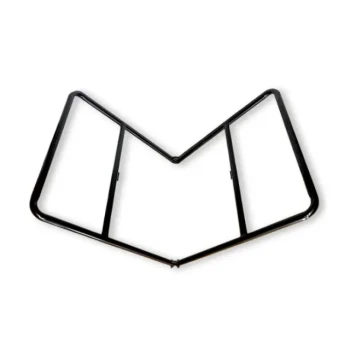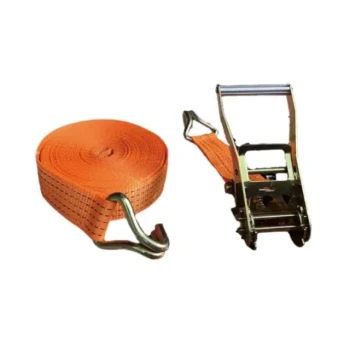Choosing between a Kenya Top-Bar hive and a Langstroth hive isn't about which design is universally superior, but which is fundamentally better for your specific goals, physical abilities, and beekeeping philosophy. The Langstroth is the standard for scalable honey production, while the Top-Bar hive is designed for simplicity, less physical strain, and a more natural approach to beekeeping.
The core difference comes down to a trade-off: The Langstroth system prioritizes efficiency and honey yield through a higher initial capital investment, while the Kenya Top-Bar hive prioritizes ease of management and lower physical effort through a higher input of time and labor.

The Fundamental Design Difference: Vertical vs. Horizontal
The most significant distinction between these two hives is their orientation and structure, which dictates every aspect of how you will manage your bees.
H3: The Langstroth: A Modular, Vertical System
The Langstroth is the most common hive in the world. It is a system of stacked, interchangeable boxes.
The bottom boxes, or brood chambers, are for the queen to lay eggs and raise young bees. As the colony grows, you add boxes called "supers" on top for honey storage.
This vertical design is highly efficient for large-scale honey production because you can easily add or remove entire boxes. However, inspecting the brood nest requires disassembling the hive and lifting heavy boxes that can weigh 50-80 lbs (22-36 kg) or more.
H3: The Kenya Top-Bar: A Horizontal, All-in-One System
The Kenya Top-Bar Hive (KTBH) is a single, long horizontal box that sits on legs, bringing it to a comfortable working height.
Instead of frames, the hive uses simple wooden bars that span the top. Bees build their comb naturally, hanging down from these bars.
Because it's a single, self-contained unit, there is no heavy lifting of boxes. Hive inspections are less invasive, as you can remove and examine one bar at a time while the rest of the colony remains undisturbed.
The Management Workflow: Efficiency vs. Simplicity
Your day-to-day experience as a beekeeper will be vastly different depending on the hive you choose.
H3: The Langstroth Workflow: Heavy Lifting and Expansion
Managing a Langstroth hive requires vigilance to prevent swarming by adding supers at the right time. This is a crucial part of maximizing honey production.
Inspections involve "cracking open" the hive and lifting boxes to access the brood chamber. This can be disruptive to the bees. Honey is typically harvested all at once by removing full supers.
H3: The KTBH Workflow: Frequent and Gentle Interaction
The KTBH encourages more frequent but less intensive management. Because the hive is not expandable, the beekeeper manages colony space by harvesting honey regularly.
Inspections are calm and methodical. You gently smoke one end of the hive and slowly remove individual bars for review. This gentle approach often results in calmer bees.
Understanding the Core Trade-offs
Neither hive is perfect. The right choice depends on what you are willing to sacrifice in exchange for what you value most.
H3: Honey Production and Scalability
The Langstroth is the undisputed winner for those focused on maximizing honey yield. Its modular design and use of foundation (wax or plastic sheets) allow for rapid expansion and efficient honey extraction.
The KTBH has a fixed volume and cannot be expanded. This naturally limits the size of the colony and, therefore, its potential honey output.
H3: Physical Demands and Accessibility
The KTBH is the clear choice for anyone with back problems or who wants to avoid heavy lifting. Its elevated, single-box design makes it far more accessible.
The Langstroth system is physically demanding. Lifting heavy, bee-filled boxes is a standard part of its management.
H3: Cost: Initial Capital vs. Ongoing Labor
A Langstroth hive typically requires a greater upfront financial investment for boxes, frames, and foundation.
The KTBH is simpler in design and can often be built cheaply. However, it requires a higher labor input over time, with more frequent inspections and manual honey harvesting.
Making the Right Choice for Your Goal
To choose correctly, honestly assess your primary motivation for keeping bees.
- If your primary focus is maximizing honey production: The Langstroth hive's scalability and efficiency are unmatched.
- If your primary focus is a low-strain, accessible hobby: The Kenya Top-Bar hive's no-lift design makes it the ideal choice.
- If your primary focus is "natural" beekeeping with minimal disruption: The KTBH's gentle, single-comb inspection process aligns perfectly with this philosophy.
Ultimately, the best hive is the one that fits your body, budget, and beekeeping ambitions.
Summary Table:
| Feature | Langstroth Hive | Kenya Top-Bar Hive |
|---|---|---|
| Primary Strength | High honey yield & scalability | Low physical strain & gentle management |
| Best For | Commercial honey production | Hobbyists, natural beekeeping |
| Physical Demand | Heavy lifting required (50-80 lbs boxes) | No heavy lifting, accessible design |
| Management Style | Modular, vertical expansion | Horizontal, single-comb inspections |
| Cost Structure | Higher initial investment | Lower upfront cost, higher labor input |
Ready to Scale Your Beekeeping Operation?
Whether you're a commercial apiary maximizing honey production or a distributor sourcing reliable equipment, HONESTBEE supplies professional-grade beekeeping supplies and hive components for Langstroth, Top-Bar, and other systems. Our wholesale-focused operations ensure you get durable, efficient equipment tailored to your specific goals.
Contact HONESTBEE today for wholesale pricing and expert support to equip your beekeeping success.
Visual Guide

Related Products
- Top Bar Beehive for Beekeeping Wholesales Kenya Top Bar Hive
- Long Langstroth Style Horizontal Top Bar Hive for Wholesale
- Langstroth Bee Hives Bee Keeping Box for Beginners Beekeeping
- Ergonomic Two Person Foldable Hive Lifter
- HONESTBEE Advanced Ergonomic Stainless Steel Hive Tool for Beekeeping
People Also Ask
- What are the benefits of a top bar hive? A Natural, Low-Impact Approach to Beekeeping
- What is the quickest method to harvest honey from a top bar hive? A Guide to the Simple 'Cut and Crush' Method
- What are the key features of the Kenyan Top Bar Hive? A Guide to Simpler, Natural Beekeeping
- Why are hive inspections easier with Top Bar Hives? Achieve a Calmer, Safer Approach to Beekeeping
- What are the labor requirements for a KTBH vs. Langstroth hive? A Guide for Apiary Efficiency



















